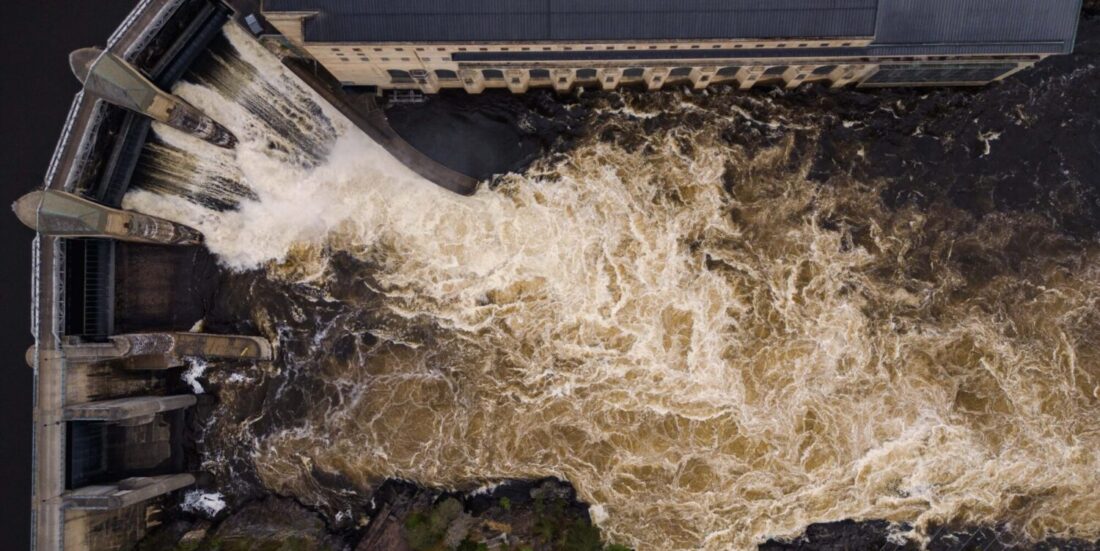Three pieces of advice for addressing a future electricity deficit
There can be no new, ‘green’ jobs without electricity. So, researchers have three pieces of advice to offer politicians as to what we should be doing to ensure adequate future energy supplies.
With the local elections fast approaching, issues surrounding electricity will be hot topics in many municipalities. So says Nils Røkke, who is Executive Vice-President for Sustainability at SINTEF. He has teamed up with NTNU Professor Asgeir Tomasgard to offer three pieces of advice to politicians as to what they should be doing to prevent an electricity deficit in Norway.

Asgeir Tomasgard (left) and Nils Røkke know exactly what politicians have to do to prevent an electricity deficit in Norway. Photo: Georg Mathisen
In danger of a deficit crisis
Norway is in danger of experiencing an electricity deficit. Politicians are only too happy to cut the ribbons at the opening of ‘green’ factories offering new local jobs. But they are less enthusiastic when it comes to approving the development of the new power plants needed to supply these factories with essential electricity.
“Following the war in Ukraine, the issue of supply security has been elevated to an entirely new level”, says Tomasgard. He and Røkke recently presented a new report at the Arendal Political and Business Forum (Arendalsuka), pointing out that Norway now finds itself in what they call an energy ‘trilemma”.
Low-hanging fruit
Trilemma? No, this isn’t a misprint. While we understand a dilemma as having to make a difficult choice between two alternatives, a trilemma puts us in an even more difficult situation. Here we have to choose from among three seemingly uncomfortable options. Ideally, we’re looking to find a comprise solution that takes account for all three. So, when it comes to electricity, we have to balance the three factors supply security, climate change considerations and the national economy.
The first piece of advice offered by the two researchers, on behalf of SINTEF and NTNU, is not to delay in taking the low-hanging fruit. They suggest promoting collaboration at local level now, with the aim of encouraging the development of renewable energy. Since it is the municipalities that have the final say when it comes to local planning and land management, electricity might very well become a key issue in the upcoming elections.
“We should have had a ‘Paris Agreement’ – tailored to our needs here in Norway”, says Tomasgard. “An agreement that determines the things we want to get done at national level and how local democracy can contribute towards achieving them”, he says.
Don’t power everything directly with electricity
So, what about the second piece of advice? Ensure that our energy carriers are fit for purpose. When we use electricity to heat our homes in winter, grid capacity becomes severely limited. Instead, buildings should be heated using water-borne heat, supplemented by district heating systems and heat pumps. Hydrogen can be used to replace natural gas. In the industrial sector, heat pumps and solar power offer massive potential.
The third piece of advice offered by SINTEF and NTNU is that politicians should act to prevent Norway from falling behind the curve. “Reverse the cuts in research into future energy systems!”, say the two researchers.
Cuts in research budgets
“This year, the cuts have amounted to 13 per cent”, says Røkke “This is odd and paradoxical given the situation we find ourselves in. Both the EU and the USA are gearing up. Norway, on the other hand, is cutting its spending on research and innovation, and that can’t be right”, he says.
Asgeir Tomasgard is not only a Professor at NTNU, but also Director of the NTRANS energy research centre. He argues that for every krone spent on funding energy research, we get four kroner back in terms of measurable economic effect. The future offers the potential for as much as twenty kroner back for every krone spent on research. His figures are based on calculations made by the consultancy Impello Management.
“Bill Gates says that we must boost our research efforts and innovation in the field of clean energy by as much as five-fold”, says Røkke. The International Energy Agency (IEA) argues that a four-fold increase is necessary if we are to achieve our zero emissions targets by 2050.
Røkke and Tomasgard take a more moderate view.
“In our opinion, the funding of research programmes supporting the green transition must be doubled. The 2024 national budget should be looking to set aside NOK 1 billion to fund research into solutions that will address the energy and climate change challenges we are currently facing here in Norway”, they say.
Major uncertainty

Ann M. Østenby argues that due to energy efficiency measures, the electricity deficit during the next few years will not be as large as has been feared. Photo: Catchlight/NVE
Head of Section Ann M. Østenby at the Norwegian Water Resources and Energy Directorate (NVE) has been speaking about major uncertainty linked to Norway’s future electricity balance. The NVE presented a new analysis at the recent Arendal Political and Business Forum. “In fact, our presentation should have been made a little earlier, but had to be postponed because the entire NVE organisation was kept busy dealing with the ‘Hans’ extreme weather event”, says Østenby.
“Our greatest uncertainties are linked to the issue of consumption development ”, says Østenby. “We’ve noted that energy efficiency measures have been working, and it looks like they will continue to work in the future. This is the reason why the much-debated electricity deficit will not be as large as has been feared during the next five years”, she says.
The NVE analysis demonstrates that growth in electricity consumption will thus be lower than previously predicted. Nevertheless, there will be significant growth in consumption in the years leading up to 2028, and very little new electricity generation is expected to come onstream. If there is only little precipitation in future years, we may experience electricity deficits in the driest periods.




